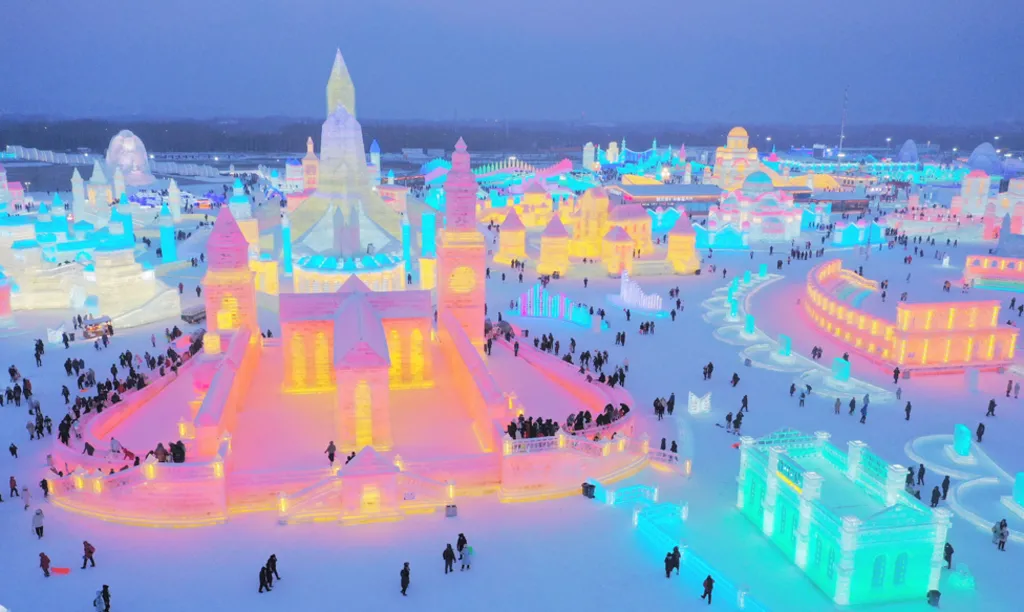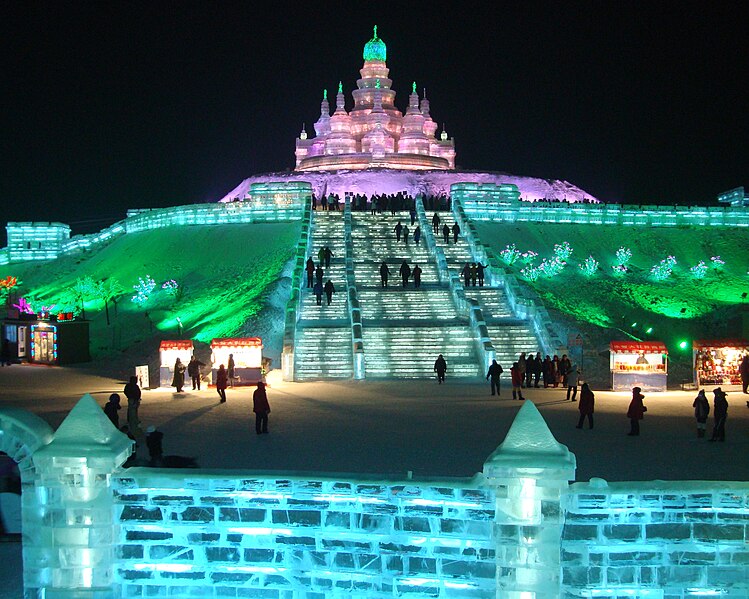China’s City of Ice
The Chinese city of Harbin is located in the northeast part of the nation, closer to Russia and the Sea of Japan than it is to Beijing or Shanghai. (Here’s a map.) It’s north of the 45th parallel north, placing it at roughly the same latitude as Green Bay, Wisconsin. But because of its terrain and winter winds from Siberia, Harbin gets very, very cold — from November through February, temperatures rarely get above freezing and regularly dip to as low as 20 degrees below zero Celsius (about -4 degrees Fahrenheit). Nevertheless, Harbin is a major Chinese city — more than 10 million people live in its metropolitan area — mostly by historical accident.
In the mid-1890s, the Russian Empire began construction of the Chinese Eastern Railway, expanding the Trans-Siberian Railway to Vladivostok, Russian’s largest city on the Sea of Japan. Harbin was a small village in the middle of the construction zone, and the Russians used Harbin as a base of operations for the railway. Harbin became a boomtown, reaching half a million people before World War II, and expanded in leaps and bounds almost every decade since.
But that doesn’t change the fact that Harbin gets brutally cold — so cold that people can’t often go outside without dressing in multiple layers. But instead of using the weather as a reason to leave Harbin, the locals and their government turn the city into an extraordinary celebration, called the “Harbin International Ice and Snow Sculpture Festival.” As seen, partially, below, it’s massive.

Each year, starting in early December when the local Songhua River freezes, Harbin transforms from a large, cold city to a city literally made of ice. More than 10,000 workers saw huge cubes of ice from the frozen river and use them to construct everything above. Everything seen above, except for the people walking around and the lights illuminating the structures, is constructed from blocks of ice drawn from the river. The installation, which typically opens on in late December or early January and runs through February, includes “dazzlingly lit sculptures of Chinese palaces, Russian churches and French cathedrals” (as seen above), according to the Sydney Morning Herald, and “activities like sledding, ice hockey, ice football, speed skating and Alpine skiing competitions,” according to the BBC. (The BBC story has a lot more pictures, and is well worth a click.)
The festival got its start in 1963, originally as an ice lantern show, and expanded over time. It’s become an annual event with some gaps throughout its history — during Mao Zedong’s “Cultural Revolution” purge, the city decided not to have such a festival. But the festival has been an annual even since 1985 (with limited capacity in 2021 due to the COVID-19 pandemic), transforming a huge area of Harbin into a walkable city of ice and snow.
And despite the bitter cold required to make the festival work, it attracts a lot of tourists. Roughly 800,000 people visit each year, most of them from other parts of China. The cost of entry is about $20 US (and of course, there are plenty of ways to spend more money once there) and has brought in more than $4 billion in revenue to Harbin over its history. But if you go, bring a coat or three.
Bonus fact: The coldest temperature ever directly measured was -89.2 °C (-128.6 °F), at the Russian Vostok Station not too far from the South Pole. But getting that measurement was a because before remote monitoring tools were available, it was almost impossible to accurately measure. As National Geographic explains, “Humans can’t inhale air that cold for more than a few breaths—it would cause our lungs to hemorrhage. Russian scientists ducking out to check on the weather station would wear masks that warmed the air before they breathed it in.” We can now measure temperatures via satellite, and, per that Nat Geo article, have detected temperatures as low as -97.8 °C (-144 °F).
From the Archives: Where Ten Degrees Below Zero is Unreasonably Warm: A place colder than Harbin and yes, people live there.

